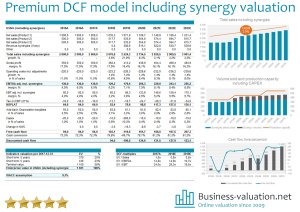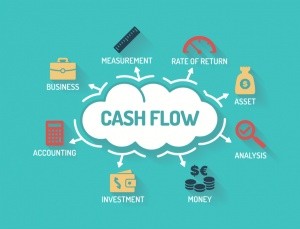
Discounted Cash Flow (DCF) Models 3 comments

What is Discounted Cash Flow?
Discounted Cash Flow Analysis is one of the most important methods to accurately estimate the value of an asset via applying the concept of the time value of money (TVM). Primitive forms of discounted cash flow analysis have been used since ancient times but have since undergone significant development. This was sparked by the Wall Street Crash of 1929 and the need to have a reliable method for the valuation of stocks. It was not until, Irving Fisher and John Burr William’s published their texts, The Theory of Interest (1930) and The Theory of Investment Value (1938) that the discounted cash flow analysis was formally documented.
A high-level overview of the process of conducting a discounted cash flow analysis firstly involves estimating the future incoming and outgoing cash flows. After this is completed, discounting these flows is required which is usually calculated by using the Weighted Average Cost of Capital (WACC). The completion of both these steps yields the net present value (NPV). Ultimately, the aim of a discounted cash flow analysis is to calculate the financial benefit undertaken from a potential investment and if it is worth pursuing considering the cost of investment.
The Detailed Outline of the Discounted Cash Flow Process:
Step 1: Forecast the Expected Cash Flow: This would involve forecasting the expected cash flow based on the business’s income tax rate, net operating profit margin, incremental working capital requirement, company’s revenue growth rate and fixed investment requirement.
Step 2: Estimate the Discount Rate: The next step would involve estimating the WACC (Weighted Average Cost of Capital), which is the discount rate.
Step 3: Calculate the Value of the Corporation: This step would involve using the WACC to discount the expected cash flows to get the Cash Flow from Operations (CFO).
Furthermore, the WACC is used to calculate the residual value. This is added with short term assets to get the value of the corporation.
Step 4: Calculate Intrinsic Stock Value: This step involves subtracting the company’s liabilities such as debt to receive common equity. This value then should be divided by the amount of stock outstanding to receive the intrinsic stock value.
If you’d like to know more about Discounted Cash Flow Analysis, have a read of Investopedia's article
Where can I find Discounted Cash Flow DCF Excel Model Templates?
For companies considering to analyse it’s investments, the Eloquens catalogue provides a variety of Discounted Cash Flow DCF Excel Models and templates designed and built by professionals and professors where all you need to do is to input the required values. The Discounted Cash Flow DCF Model Template automatically calculates the rest for you. You can also build and self-publish your own model and template on Eloquens directly. Learn more
Most popular Models
 A Premium Discounted Cash Flow DCF Model including synergy valuation12,5773add_shopping_cart$49.00
A Premium Discounted Cash Flow DCF Model including synergy valuation12,5773add_shopping_cart$49.00
 by Patrik Johansson
by Patrik Johansson

Discounted Cash Flow DCF Valuation Model Template (Mining Company)
Financial model that performs a DCF & Relative valuation on Mining Company.2,618Discussadd_shopping_cart$120.00 by Fin-Wiser Advisory
by Fin-Wiser Advisory

Generic Cost Benefit Analysis Excel Model Template
Model projecting expected costs & benefits to analyze the financial viability of a proposed project or investment8,1054add_shopping_cart$29.00 by Projectify
by Projectify

Discounted Cash Flow (DCF) Valuation Excel Model (Engineering and Construction)
Detailed Financial model for DCF valuation on Engineering and Construction Company1,0681add_shopping_cart$120.00 by Fin-Wiser Advisory
by Fin-Wiser Advisory

Discounted Cash Flow (DCF) and Comparables Valuation Model
Discounted Cash Flow analysis of your business and compare it to a valuation comparables.1,184Discussadd_shopping_cart$29.00 by HEURTEBIZE
by HEURTEBIZE

Digital Realty Trust Inc Valuation Excel Model: Complete DCF Valuation with Forecasted Financial Statements
Completely editable and formula-based Valuation Excel Model for Digital Realty Trust Inc Shares62Discussadd_shopping_cart








